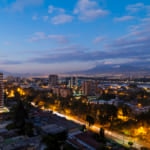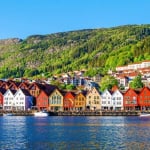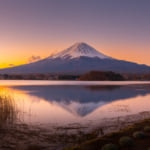Name: Gyeongbokgung Palace
Address: 161 Sajik-ro, Sejongno, Jongno-gu, Seoul, South Korea
Access: Subway Line 3, Gyeongbokgung Station, Exit 5
Hours: March–May and September–October: 9:00–18:00 / June–August: 9:00–18:30 / November–February: 9:00–17:00 (Last entry 1 hour before closing)
Closed: Every Tuesday (open if a holiday falls on Tuesday)
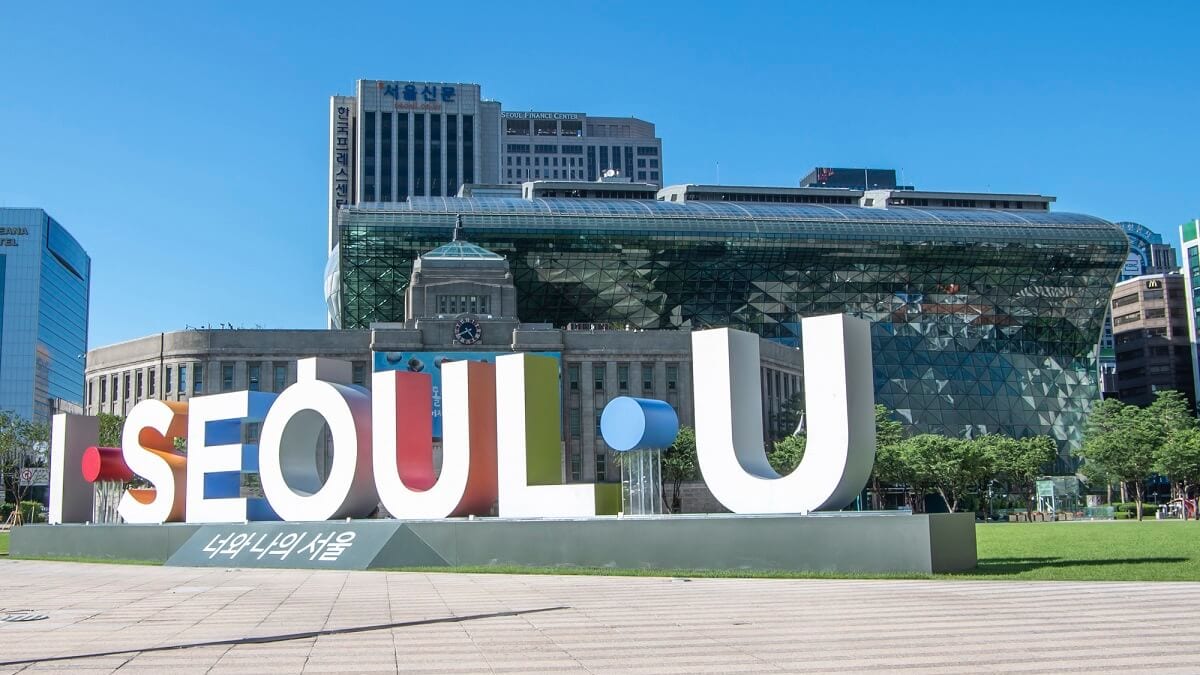
39 Recommended and Popular Tourist Spots in Seoul, South Korea
Seoul, the capital of South Korea, is a popular tourist destination. Whether it’s your first time visiting Seoul or you've been many times, the Skyticket Tourism Guide editorial team has carefully selected the best spots for you to enjoy. Here, we introduce 39 classic tourist spots in Seoul, where old and new cultures coexist.
table of contents
[x] close
39 Recommended and Popular Tourist Spots in Seoul, South Korea
- 1. Gyeongbokgung
- 2. N Seoul Tower
- 3. Bukchon Hanok Village
- 4. Cheonggyecheon
- 5. Hongdae
- 6. 63 SQUARE
- 7. Changdeokgung
- 8. Gwanghwamun
- 9. Myeongdong
- 10. Myeongdong Cathedral
- 11. Suwon Hwaseong Fortress
- 12. National Museum of Korea
- 13. Ihwa-dong Mural Village
- 14. COEX Mall
- 15. Samcheonggak
- 16. Noryangjin Fish Market
- 17. Namsan Park
- 18. Jamsil Baseball Stadium
- 19. National Folk Museum of Korea
- 20. Lotte World
- 21. Seoul Children's Grand Park
- 22. Jongmyo Shrine
- The War Memorial of Korea
- 24. Bukhansan National Park
- 25. Deoksugung
- 26. Jogyesa Temple
- 27. Bongeunsa Temple
- 28. Leeum Museum of Art
- 29. Changgyeonggung
- 30. Heunginjimun (Dongdaemun)
- 31. Dongdaemun Market
- 32. Lotte Mart Seoul Station Branch
- 33. Ssamziegil
- 34. Samcheong-dong Street
- 35. Banpo Hangang Park
- 36. Sinsa-dong Garosu-gil
- 37. Seoul Forest
- 38. Museum Kimchikan
- 39. Myeongdong Nanta Theater
- ◎ Enjoy sightseeing, food, entertainment, and shopping in Seoul!
1. Gyeongbokgung
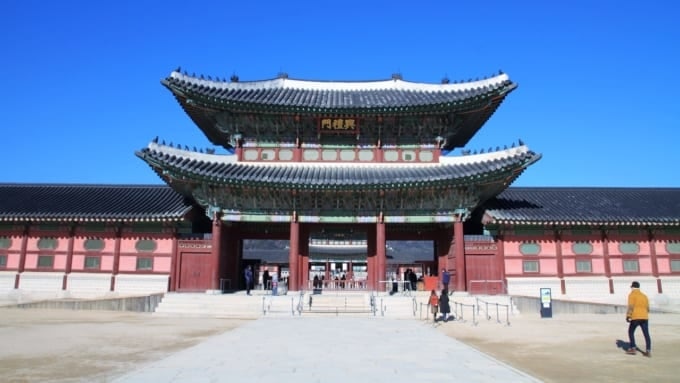
Gyeongbok Palace is known as one of the five grand palaces representing Seoul. Its name means "The Palace of Great Blessings Shining for Thousands of Years." For many, this is the must-visit spot when sightseeing in Seoul. Gyeongbokgung served as the main palace during the Joseon Dynasty (1392–1910) and has over 600 years of history.
Within the grounds, there are many attractions like the Geunjeongjeon Hall, Hyangwonjeong Pavilion, and Gyeonghoeru Pavilion. The palace was built based on feng shui principles, and it is popular as a power spot. Don’t miss the nearby National Palace Museum and National Folk Museum, which display numerous artifacts and national treasures left in the palace. The guard-changing ceremony is held twice daily at 10:00 AM and 2:00 PM, except on rainy days and Mondays.
2. N Seoul Tower
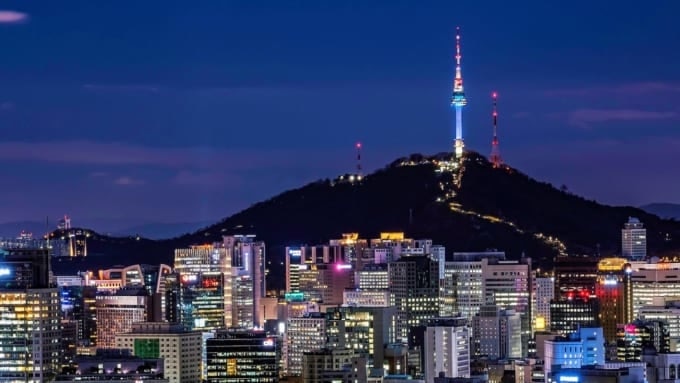
Rising atop Namsan, near the bustling Myeongdong area, N Seoul Tower is a hugely popular tourist spot, as well as a favorite date spot for locals. Originally built as a TV and radio transmission tower for Seoul’s metropolitan area, it was renovated and reopened in 2005.
While the restaurants and souvenir shops are great, the must-visit spot here is the observation deck, offering a panoramic view of Seoul’s stunning scenery. The tower is beautifully lit up at night, creating a more romantic atmosphere. There’s also an amusement area for children, making it a popular spot for family trips, not just couples. Instead of using the crowded cable car, it's recommended to take the circulatory bus from downtown.
Name: N Seoul Tower
Address: 105 Namsan Park-gil, Yongsan-gu, Seoul, South Korea
Access: Take the Namsan Circulatory Bus 02, 03, or 05 and get off at N Seoul Tower / Route 03 passes Seoul Station, and Route 05 passes Namdaemun Market and Myeongdong Entrance
Hours: Monday–Thursday and Sunday: 10:00–23:00 / Friday–Saturday: 10:00–24:00 (Observation deck hours)
Closed: Open all year
3. Bukchon Hanok Village
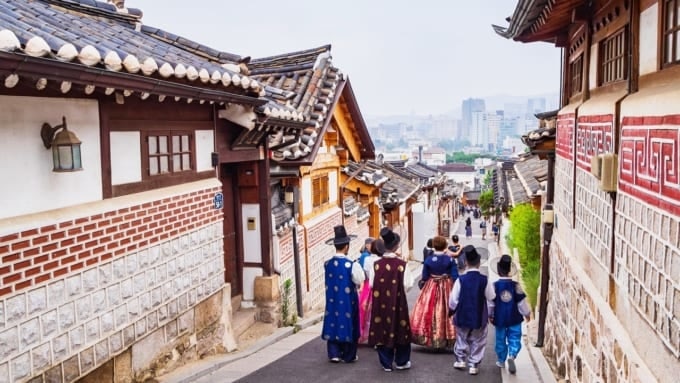
Located in the northern part of Seoul, Bukchon Hanok Village is surrounded by royal palaces from the Joseon Dynasty. This area is home to many traditional Korean houses, called "hanok," that date back to the Joseon period. Known as an upscale residential area where nobles lived, it is famous for its luxury houses.
This historical space has a unique charm that no other tourist spot in Seoul can offer. The nostalgic streets, where people still live today, are perfect for taking scenic photos. Nearby, there are also art museums, galleries, and stylish cafes. The retro shops feature unique handmade goods, making them great for souvenirs. If you’re looking for hidden treasures in Seoul, this is the place to be.
Name: Bukchon Hanok Village
Address: 37 Gyedong-gil, Jongno-gu, Seoul, South Korea
Access: Subway Line 3, Anguk Station, Exit 3 / Turn left at the first corner and walk straight past the Bukchon Cultural Center
4. Cheonggyecheon
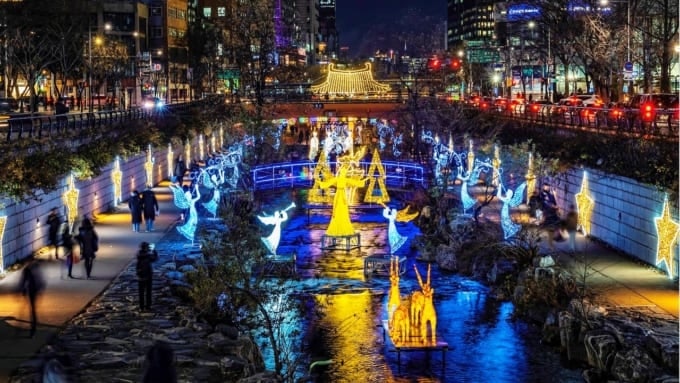
Cheonggyecheon is an 8-kilometer-long stream that flows through the heart of Seoul, serving as a relaxing spot for locals. The stream flows from Cheonggye Plaza in central Seoul, passing Gwanghwamun, City Hall, Euljiro, and Dongdaemun, all popular tourist areas. It’s a great idea to take a stroll along the stream. There are many accommodations, restaurants, and shops around the stream, making it a convenient tourist base.
The area around the stream is pedestrian-friendly, with plazas, water play areas, and 22 bridges crossing the stream. At night, it is beautifully illuminated, offering a different, more magical atmosphere. Seasonal decorations along the stream are also something to look forward to.
Name: Cheonggyecheon
Address: From 1 Sejong-ro, Jung-gu to Sindapcheolgyo Bridge, Seongdong-gu, Seoul, South Korea
Access: Subway Line 2, City Hall Station, Exit 5 (5 minutes walk) / Subway Line 5, Gwanghwamun Station, Exit 5 (5 minutes walk)
5. Hongdae
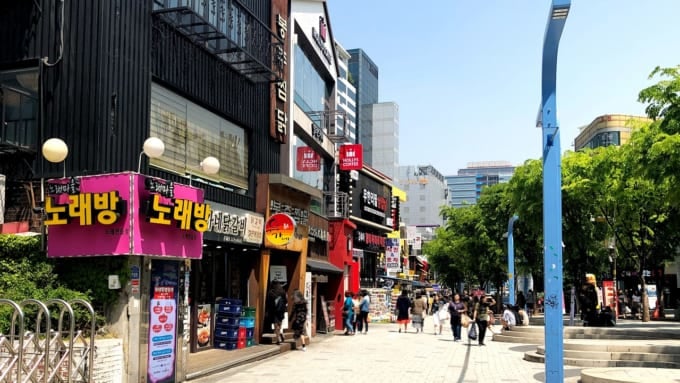
Hongdae is a cultural hub popular with Seoul’s trend-savvy youth. Its proximity to an art university means the whole area is filled with artistic vibes. The cafes and shops are all unique and stylish, making it a favorite destination for young travelers.
Many tourists come to Hongdae for its lively nightlife, with numerous clubs and live music venues. Hongdae is the forefront of culture, where cutting-edge shops continue to emerge. It's the perfect place to feel the trends of Seoul's youth. Note that many shops open late, so it's best to visit in the afternoon.
Name: Hongdae
Address: Eoulmadang-ro, Mapo-gu, Seoul, South Korea
Access: Subway Line 2, Hongik University Station
6. 63 SQUARE
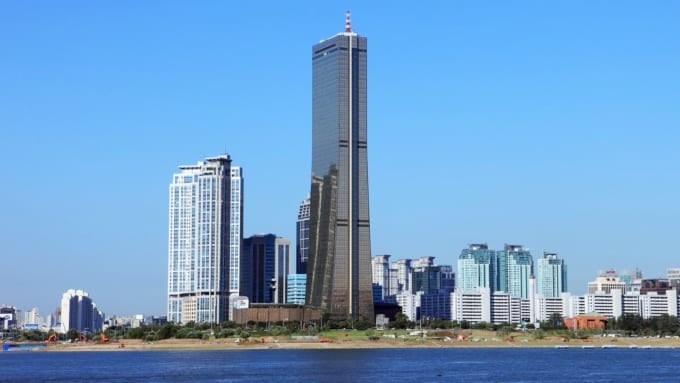
The "63 SQUARE" is a popular spot in Seoul, boasting 60 floors above ground and standing 249 meters tall. The building's walls are made with special glass coated in pure 24-karat gold, which reflects sunlight, earning it the nickname "Golden Tower."
With duty-free shops and restaurants, 63 SQUARE is bustling with people, making it a great spot for dates or creating memories from your trip. The building also has facilities such as a post office, bank, and baby room, ensuring a comfortable visit for all tourists.
In June 2024, the aquarium "Aqua Planet 63" closed, and in its place, the Seoul branch of the Pompidou Center, a contemporary art museum from Paris, is scheduled to open in 2025.
Name: 63 SQUARE (Yuksam Building/63 Building)
Address: 50 63-ro, Yeongdeungpo-gu, Seoul, South Korea
Access: Subway Line 5, Yeouinaru Station, Exit 4
7. Changdeokgung
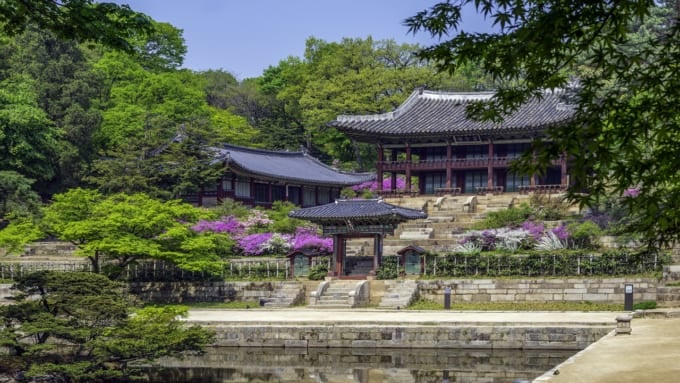
Changdeokgung is an ancient palace registered as a UNESCO World Heritage site, and it's one of the top tourist attractions in Seoul. Built during the Joseon Dynasty (which lasted from the late 14th century to the 20th century), the palace is beautifully preserved. The grounds are expansive, with many sights to see. Its beautiful garden, created to harmonize with nature, is particularly popular among tourists, as it offers a different atmosphere with each season.
When visiting, it's recommended to join an English guided tour (around 90 minutes). The guides provide historical context and stories, enhancing the experience. As there are limited times and spots available, check the official website before visiting.
Name: Changdeokgung
Address: 99 Yulgok-ro, Jongno-gu, Seoul, South Korea
Access: Subway Line 3, Anguk Station, Exit 3 (5-minute walk)
Hours: February–May and September–October: 9:00–18:00 / June–August: 9:00–18:30 / November–January: 9:00–17:30 (Last entry 1 hour before closing)
Closed: Every Monday (open if a holiday falls on Monday)
8. Gwanghwamun
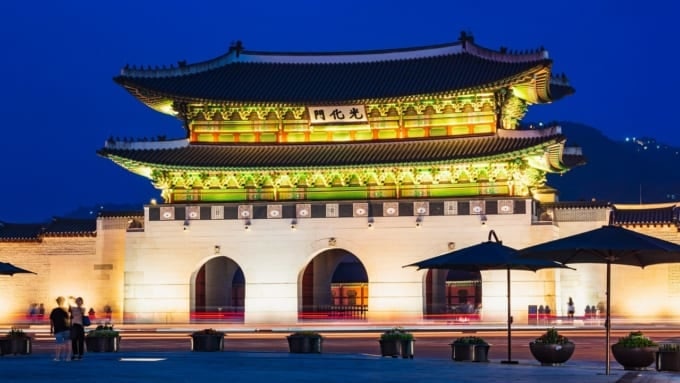
Gwanghwamun is the southern gate of Gyeongbokgung and once served as the main gate for kings. Leading from Gwanghwamun to Seoul City Hall is Sejong-ro, where Gwanghwamun Plaza is located. This is a central area in Seoul where many tourists and locals gather. There are nearby shops that rent traditional Korean clothing, so it's recommended to experience sightseeing in costume.
Below Gwanghwamun Plaza is a museum dedicated to Korean hero Admiral Yi Sun-sin, who fought against Toyotomi Hideyoshi, and King Sejong, who created the Hangul alphabet. There's also the multi-purpose "Haechi Plaza." It's conveniently connected to Gwanghwamun Station via subway.
Name: Gwanghwamun
Address: 161 Sajik-ro, Sejongno, Jongno-gu, Seoul, South Korea
Access: Subway Line 5, Gwanghwamun Station, Exit 9
Hours: Haechi Plaza is open from 5:00–25:00
Closed: Open all year
9. Myeongdong
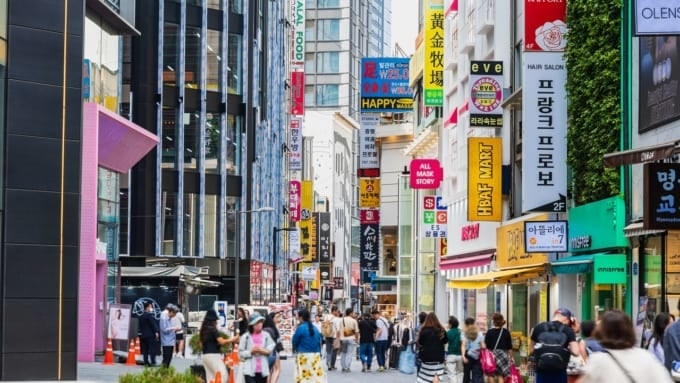
Myeongdong is Seoul's largest and most well-known shopping district. It’s such a popular tourist area that it’s hard to imagine visiting Seoul without coming here. With many tourists visiting, English is widely spoken, which is helpful for first-time travelers abroad.
The highlight of Myeongdong is its street food. In the evening, the main street fills up with food stalls. Myeongdong is a "food city" where you can enjoy cheap and delicious gourmet treats all in one place.
Aside from its commercial district, Myeongdong is also a financial hub of Korea. You’ll find everything from cosmetics and fashion boutiques to hotels, restaurants, spas, and department stores. From affordable Korean cosmetics to sweets, it's the perfect spot for finding souvenirs. If you want to make the most of your time in Seoul, Myeongdong is the place to be!
Name: Myeongdong
Address: Myeongdong, Jung-gu, Seoul, South Korea
Access: Subway Line 4, Myeongdong Station / Subway Line 2, Euljiro 1-ga Station
10. Myeongdong Cathedral
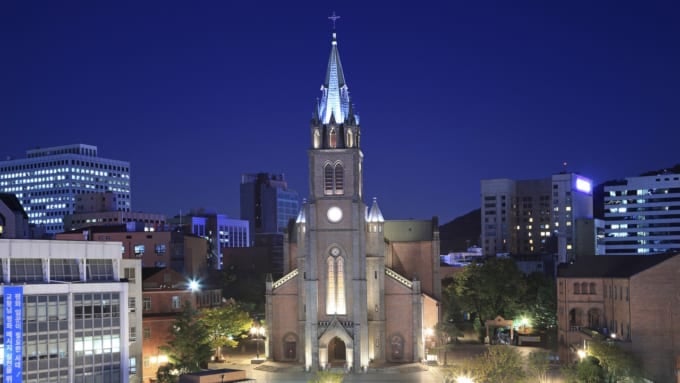
Located in Myeongdong, the Myeongdong Cathedral is known as the oldest Catholic church in Korea. Built in the country's first Gothic style, it’s also a designated national historic site. After undergoing renovations due to aging, it was reborn in 2014 as the multi-purpose cultural space "1898 Myeongdong Cathedral."
In the basement, you'll find stylish cafes and souvenir shops, making it an ideal place for sightseeing. The cathedral is now a symbol of the Catholic Church in Korea and is visited by many tourists and local Catholic believers.
Stepping inside the cathedral transports you to a serene space far removed from the hustle and bustle of Seoul. It’s a hidden gem, perfect for anyone seeking a peaceful place to relax.
Name: Myeongdong Cathedral
Address: 74 Myeongdong-gil, Myeongdong 2-ga, Jung-gu, Seoul, South Korea
Access: Subway Line 4, Myeongdong Station, Exit 6 (8-minute walk)
Official Website: http://www.mdsd.or.kr/
11. Suwon Hwaseong Fortress
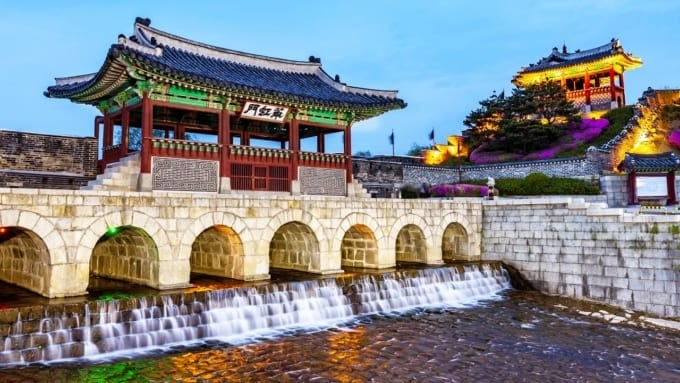
Suwon Hwaseong Fortress, located about an hour by train from Seoul, was built during the late Joseon Dynasty. It was designated as a UNESCO World Heritage site in 1997, rapidly turning it into a popular tourist destination, and it is now one of Korea's iconic landmarks. It’s highly recommended for those who want to experience a different kind of sightseeing compared to central Seoul.
The fortress is beautiful throughout the year, with seasonal flowers and plants that make it enjoyable no matter when you visit. You can walk around the castle, ride the "Hwaseong Train" that operates within the premises, and don’t miss the martial arts demonstrations around 11:00 AM and the evening light-up show.
Name: Suwon Hwaseong Fortress
Address: 910 Jeongjo-ro, Paldal-gu, Suwon-si, Gyeonggi-do, South Korea
Access: Suwon Station on National Railroad Line 1 / Take a bus bound for Paldalmun from the station’s bus stop / Get off at Paldalmun
Hours: March–October: 9:00–18:00 / November–February: 9:00–17:00 (Last entry 30 minutes before closing)
Closed: Open all year
12. National Museum of Korea
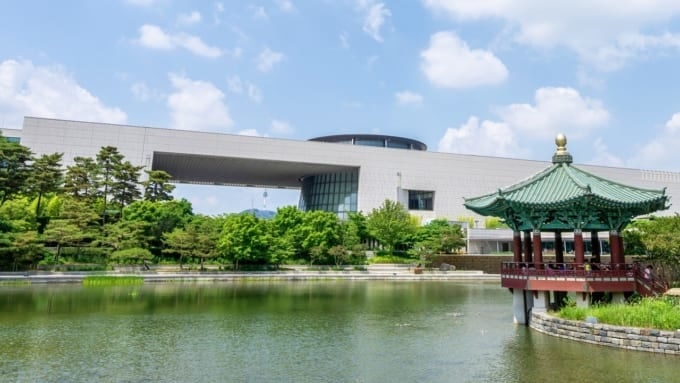
The National Museum of Korea, which was reopened after renovations in 2005, is the largest museum in Korea and the 6th largest in the world. The scale of the museum is impressive, and the cultural artifacts on display are truly stunning. If you're sightseeing in Seoul, this is a must-visit spot.
In addition to indoor exhibition rooms, there are outdoor exhibition areas, a children's museum, and special exhibition halls, making it an enjoyable destination for both adults and children. On holidays, it's bustling with families from Seoul, as well as tourists.
The number of cultural artifacts housed here has tripled compared to before the renovation. There are restaurants and souvenir shops inside the museum, so spending a whole day exploring it is a great idea. Be sure to visit the upgraded National Museum of Korea.
Name: National Museum of Korea
Address: 137 Seobinggo-ro, Yongsan-gu, Seoul, South Korea
Access: Subway Line 4 and Gyeongui Jungang Line, Ichon Station, Exit 2 / 3-minute walk / Direct connection via underground passage
Hours: Tuesday, Thursday, Friday: 10:00–18:00 / Wednesday, Saturday: 10:00–21:00 / Sunday, Holidays: 10:00–19:00 / Night opening on Wednesdays and Saturdays from 18:00–21:00 (Tickets available until 20:00)
Closed: New Year's Day / Korean New Year's Day / Chuseok Day
Official Website: https://www.museum.go.kr/site/jpn/home
13. Ihwa-dong Mural Village

Just a short walk from the Daehak-ro area in Seoul towards Naksan Park, you'll find the Ihwa-dong area. Known as "Ihwa Mural Village," this area is famous for its street art, with murals and graffiti spread throughout the area, making it a well-known open-air gallery.
Many dramas and TV shows have been filmed here, so many visitors will find it familiar. The art blends seamlessly with the streets, making it a perfect spot for taking beautiful souvenir photos. A must-see is the mural of white wings, an Instagram-worthy piece that you should definitely check out.
Name: Ihwa-dong Mural Village
Address: Ihwa-dong, Jongno-gu, Seoul, South Korea
14. COEX Mall

COEX Mall, located in the Samseong-dong area of Gangnam, Seoul, reopened in November 2014 after renovations. Situated underground, beneath the COEX complex that houses exhibition halls and conference rooms, it is one of the largest underground shopping malls in Asia.
With apparel shops, restaurants, a movie theater, an aquarium, and other amusement facilities, there's plenty to keep you entertained all day. It’s a perfect spot for family outings, dates, and of course, sightseeing in Seoul.
The aquarium, often used as a filming location for dramas and movies, is a must-see. It features over 650 species of animals, including fish, insects, reptiles, jellyfish, sharks, and sea turtles, and offers interactive experiences like the Marine Touch exhibit and an underwater tunnel.
The mall has wide, barrier-free corridors, making it accessible for strollers and wheelchairs. Hotels, duty-free shops, and airport buses are also available, making it an ideal place for last-day sightseeing on a busy trip.
Name: COEX Mall
Address: 513 Yeongdong-daero, Gangnam-gu, Seoul, South Korea
Access: Subway Line 2, Samseong Station, Exit 6 / Subway Line 9, Bongeunsa Station
Hours: Varies by store (mall hours: 11:00–22:00)
Closed: Open all year
15. Samcheonggak
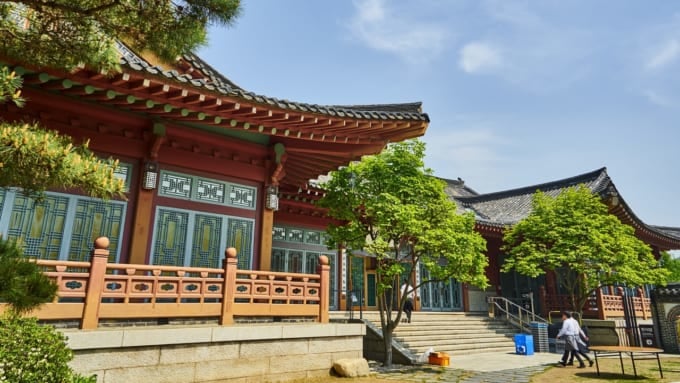
Surrounded by the beautiful forest of Bugaksan, Samcheonggak is a serene spot in Seoul that offers a natural escape. Many visitors are surprised to find such a peaceful place within the city. Originally used to host state guests, it was opened to the public in 2001.
For those interested in experiencing Korea’s traditional culture, Samcheonggak is the perfect destination. You can tour traditional Korean houses (hanok), enjoy royal court cuisine, and even participate in traditional tea ceremonies. It’s also a well-known filming location for dramas and movies, so K-drama fans won’t want to miss it!
Name: Samcheonggak
Address: 3 Embassy Road, Seongbuk-dong, Gangbuk-gu, Seoul, South Korea
Access: Subway Line 3, Anguk Station, Exit 1 / About 10 minutes by taxi
Closed: Open all year
16. Noryangjin Fish Market
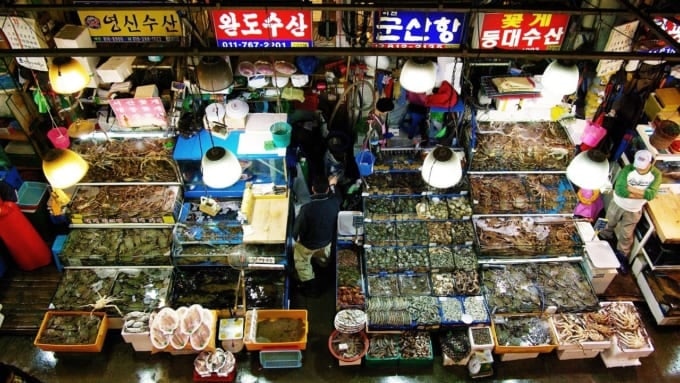
Noryangjin Fish Market is known as the "seafood kitchen" of Seoul. Fresh seafood from both Korea and abroad is brought to this market immediately after being caught, so you'll always find fresh seafood here, no matter when you visit. The facility is a 5-story building with a basement, offering retail sales, auctions, and numerous dining options.
From suppliers to local shoppers and tourists, many people come and go, giving you a genuine local experience. You can even take the seafood you buy to one of the market's restaurants, where they will prepare it for you on the spot.
A must-try dish is "Sannakji" (live octopus), served raw while still moving, or Korea's popular skate sashimi. Though these dishes may have strong flavors, they are incredibly delicious. Experience the fresh taste of the sea at Noryangjin Fish Market, where you can enjoy Korea's authentic seafood flavors.
Name: Noryangjin Fish Market
Address: 674 Nodul-ro, Dongjak-gu, Seoul, South Korea
Access: Subway Line 1, Noryangjin Station, Exit 1 / 8-minute walk
Hours: Varies by store
Closed: Korean New Year / Chuseok
Official Website: https://www.susansijang.co.kr/nsis/miw/ja/intro
17. Namsan Park
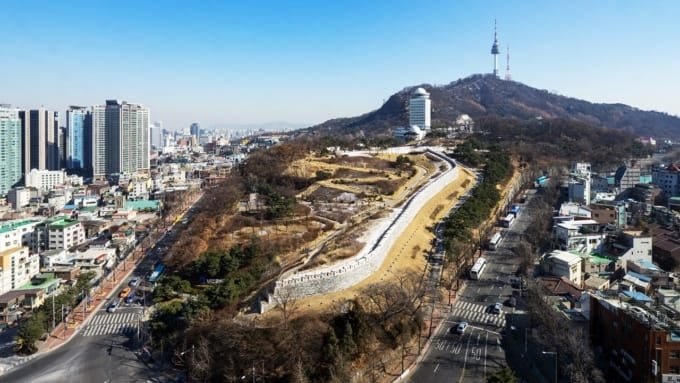
Namsan Park, home to the iconic N Seoul Tower, is a famous tourist spot in Seoul, often featured as a filming location for dramas. Many tourists visit this popular sightseeing destination. Namsan is a small mountain standing 265 meters tall, offering a panoramic view of Seoul from the top.
The park has various facilities, including an octagonal pavilion, the tower, fountains, and Namsan Library. At night, the beautiful night view makes it a perfect spot for dates. You can either take the cable car to the top or enjoy a leisurely walk through the changing seasons. The best season to visit is autumn when the vibrant red and yellow leaves cover Namsan, making it a sight to behold!
Name: Namsan Park
Address: 231 Samil-daero, Jung-gu, Seoul, South Korea
Access: Subway Line 4, Myeongdong Station, Exit 3 or 4
Hours: Varies by facility
Closed: Varies by facility
Official Website: https://parks.seoul.go.kr/template/sub/namsan.do
18. Jamsil Baseball Stadium
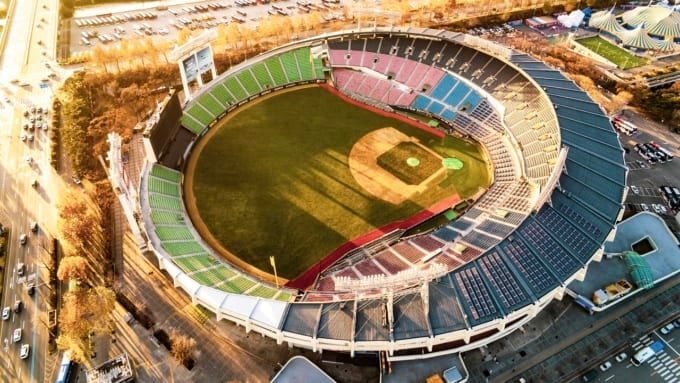
If you want to watch baseball in Seoul, head to Jamsil Baseball Stadium. This stadium is located within the Jamsil Sports Complex, which was built as the main venue for the 1988 Seoul Olympics.
During the Korean baseball season, many foreign tourists visit the stadium. Why not watch the spectacular plays unfold in front of you and experience the passionate cheering of the fans? It might be fun to enjoy a sightseeing experience closer to the locals.
Tickets can be purchased from each team's website, online ticketing services, or at the stadium's box office. Recently, there have been ticket counters available in English, so even if you don't speak Korean, you can easily purchase tickets.
Name: Jamsil Baseball Stadium
Address: 25 Olympic-ro, Songpa-gu, Seoul, South Korea
Access: Subway Line 2 or 9, Sports Complex Station, Exit 5 or 6
Hours: Depends on the event
19. National Folk Museum of Korea
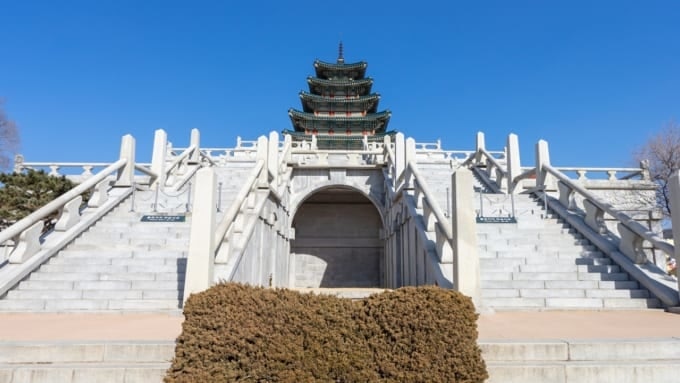
The National Folk Museum of Korea, opened in 1945, is a museum filled with information about the traditional life and culture of Korean people. There's a saying, "When in Rome, do as the Romans do," and without understanding the culture of a place, it’s hard to grasp its customs. When you visit Seoul, make sure to learn about Korea at the National Folk Museum.
The museum's main theme is "folklore," and it features three permanent exhibition rooms: "History of Korean People’s Daily Lives," "Korean People’s Everyday Life," and "The Life Cycle of Korean People." The displays make it easy to understand Korean history and traditional lifestyles, which is why the museum is popular with tourists.
Located within the grounds of Seoul’s famous Gyeongbokgung, the building is shaped like a five-story pagoda, making it easy to spot. There are also guided tours available in foreign languages for tourists. However, many exhibits are interactive and hands-on, so anyone can enjoy the experience.
Name: National Folk Museum of Korea
Address: 37 Samcheong-ro, Jongno-gu, Seoul, South Korea
Access: Subway Line 3, Anguk Station, Exit 1 / 15-minute walk
Hours: March–May, September–October: 9:00–18:00 / June–August: 9:00–18:30 / November–February: 9:00–17:00 / Weekends and holidays from May to August: 9:00–19:00 (Last entry one hour before closing)
Closed: New Year’s Day / Korean New Year’s Day / Chuseok
Official Website: https://www.nfm.go.kr/home/index.do
20. Lotte World
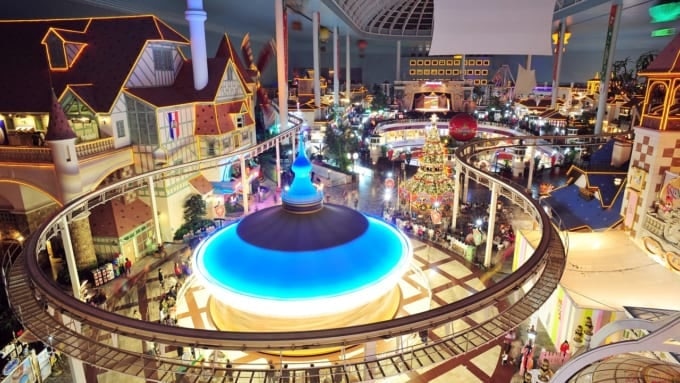
Lotte World is one of Korea’s top theme parks and a must-visit for family trips to Seoul. As the world’s largest indoor theme park, it even holds a Guinness World Record.
The indoor area alone is enough to keep you entertained, making it a perfect option for rainy days. In the surrounding area, you'll find an ice rink, aquarium, museum, department stores, duty-free shops, and various restaurants. Use the "Magic Pass" to shorten wait times for attractions and make the most of your visit to Lotte World!
Name: Lotte World
Address: 240 Olympic-ro, Songpa-gu, Seoul, South Korea
Access: Directly connected to Jamsil Station on Subway Line 2 or 8
Hours: Varies by facility
21. Seoul Children's Grand Park
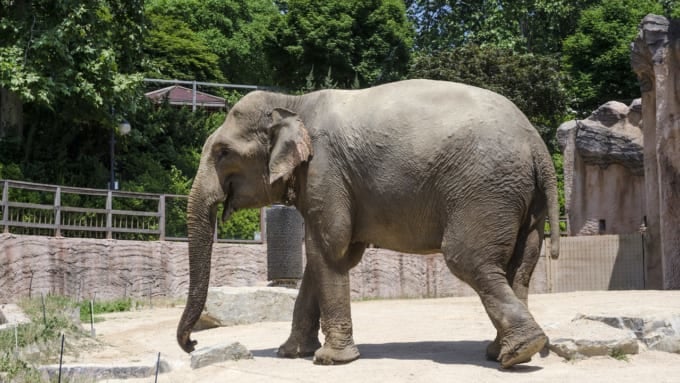
Seoul Children's Grand Park is located in Gwangjin-gu, slightly away from the city center of Seoul. "Eorini" means "children" in Korean, and this park is very famous, with almost every child living in Seoul having visited at least once. It is also often used for kindergarten and elementary school field trips.
The vast park features a zoo, a botanical garden, an amusement park, and playgrounds, making it a popular destination for families and couples. Tourists, as well as Seoul residents, visit to enjoy the lush greenery in the midst of the city.
One of the highlights is the marine museum, where you can observe animals like polar bears, sea lions, and seals underwater. The zoo also has various animals, and there’s even an attraction where you can ride a camel. During the cherry blossom season in spring, it’s a great spot to bring a picnic and enjoy the flowers.
Name: Seoul Children's Grand Park
Address: 216 Neungdong-ro, Gwangjin-gu, Seoul, South Korea
Access: Subway Line 7, Children's Grand Park Station, Exit 1 / Subway Line 5, Achasan Station, Exit 3–5
Hours: Park: 5:00–22:00 / Zoo: 10:00–17:30 / Amusement Park: 10:00–19:00 / Botanical Garden: 10:00–17:00
Closed: Open all year
Official Website: https://www.sisul.or.kr/open_content/childrenpark/
22. Jongmyo Shrine
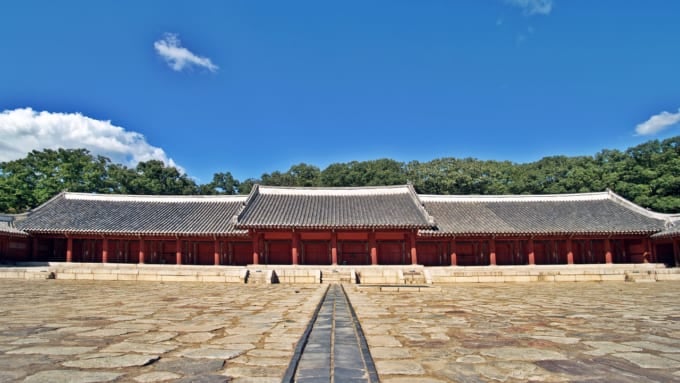
Jongmyo Shrine is a sacred place for Koreans as it enshrines the spirit tablets of kings and queens of the Joseon Dynasty. The "Jongmyo Jerye" is a famous traditional ritual that is conducted while wearing traditional clothing and playing traditional instruments, replicating ceremonies from the past. It offers a real-life experience of traveling back to the Joseon era.
The building itself is said to be the longest single-wooden structure in the world and is a must-see! Unlike the bustling atmosphere of central Seoul, Jongmyo Shrine offers a quiet and solemn ambiance. Note that the viewing hours are limited, so it's recommended to check ahead of your visit.
Name: Jongmyo Shrine
Address: 157 Jong-ro, Jongno-gu, Seoul, South Korea
Access: Subway Line 1, 3, or 5, Jongno 3-ga Station, Exit 11 / 5-minute walk
Hours: February–May, September–October: 9:00–18:00 / June–August: 9:00–18:30 / November–January: 9:00–17:30 (Ticket sales until one hour before closing)
Closed: Tuesdays (Open on public holidays)
The War Memorial of Korea
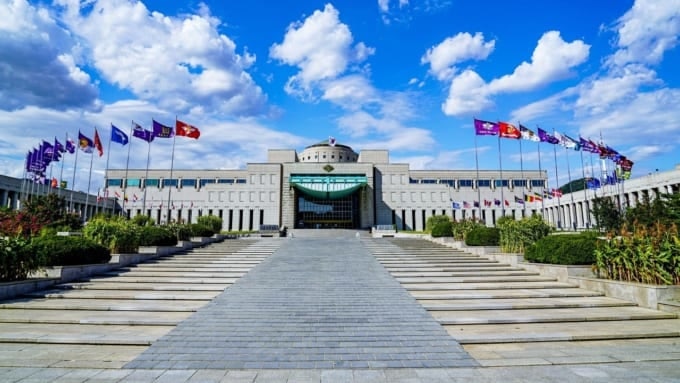
The War Memorial of Korea is a museum dedicated to wars involving Korea and is located near Samgakji Station on Subway Line 6 in Seoul. The museum houses over 13,000 exhibits, including both replicas and actual artifacts used in the wars. Around two-thirds of the displays focus on the Korean War, and every Friday, there is a parade by the national military honor guard in front of the memorial.
The parade, featuring the army, navy, and air force, is a sight to behold, making it popular with tourists. Learning about the wars of Korea, a neighboring country, can provide a deeper understanding of the region’s history. It's worth visiting this unique and informative attraction.
Name: The War Memorial of Korea
Address: 29 Itaewon-ro, Yongsan-gu, Seoul, South Korea
Access: Subway Line 4 or 6, Samgakji Station, Exit 12 / 5-minute walk
Hours: 9:00–18:00 (Last entry at 17:00)
Closed: Mondays (If a public holiday falls on Monday, the museum will be closed the day after)
Official Website: https://www.warmemo.or.kr:8443/Home/index
24. Bukhansan National Park
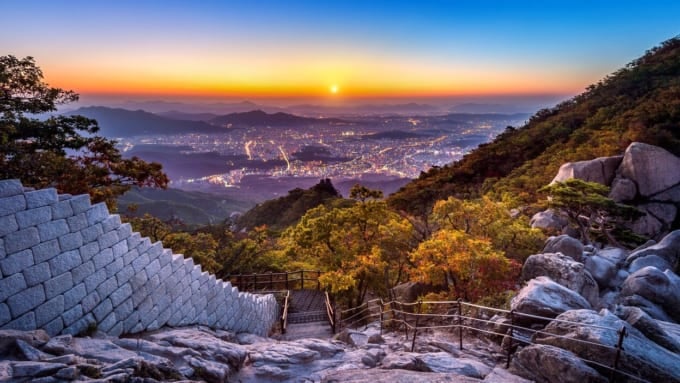
If you’re interested in trekking in Seoul, Bukhansan is the place to go. Located on the border of northern Seoul and Goyang-si in Gyeonggi-do, Bukhansan includes three peaks: Baegundae, Insu-bong, and Mangyeongdae, collectively known as Samgaksan.
The park offers a variety of trails, ranging from challenging climbs to easy hiking routes, making it accessible for all levels of hikers. On weekends, it’s bustling with locals. From the summit, you can enjoy spectacular views of the surrounding mountains and the city of Seoul. If you’re tired of typical tourist attractions, this is a refreshing destination to explore.
You’ll need to take a bus to the trailhead, but the signs are unfortunately only in Korean, so it’s recommended to research the route beforehand.
Name: Bukhansan National Park
Address: Eunpyeong-gu, Jongno-gu, Gangbuk-gu, Seongbuk-gu, Seoul / Uijeongbu-si, Goyang-si, Gyeonggi-do
Access: Subway Line 3, Gupabal Station, then take a bus
Official Website: https://www.knps.or.kr/front/portal/visit/visitCourseMain.do?parkId=121500&menuNo=7020092
25. Deoksugung
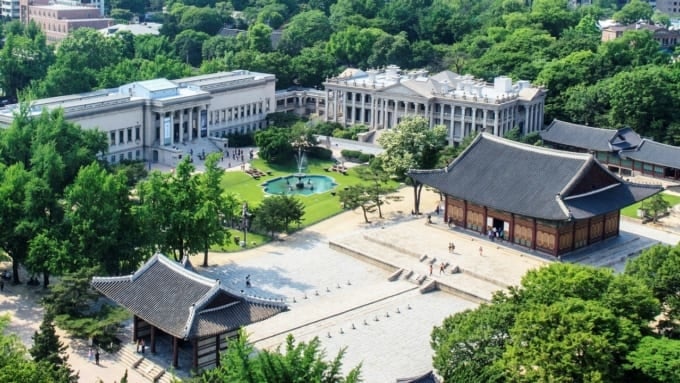
Deoksugung, located in central Seoul, is one of Korea's five grand palaces. Surrounded by nature, it is considered an oasis in the city. It’s not uncommon to see local office workers visiting the palace during lunch breaks, and for tourists, a morning stroll around the palace is highly recommended.
Originally called "Gyeongungung," it was later renamed "Deoksugung," meaning "Palace of Virtuous Longevity," in honor of King Gojong’s wish for long life. Unlike other royal palaces, Deoksugung features unique architecture, blending traditional Korean and Western styles.
Tourists love the soldiers who guard the main gate, Daehanmun, as they still stand guard in traditional uniforms, no matter the weather. If you’re lucky, you may witness the "Royal Guard Changing Ceremony," which is similar to the Changing of the Guard in the UK.
Name: Deoksugung
Address: 99 Sejong-daero, Jung-gu, Seoul, South Korea
Access: Subway Line 1 or 2, City Hall Station
Hours: 9:00–21:00 (Last entry at 20:00)
Closed: Mondays
Official Website: https://royal.cha.go.kr/JPN/contents/J104010000.do
26. Jogyesa Temple
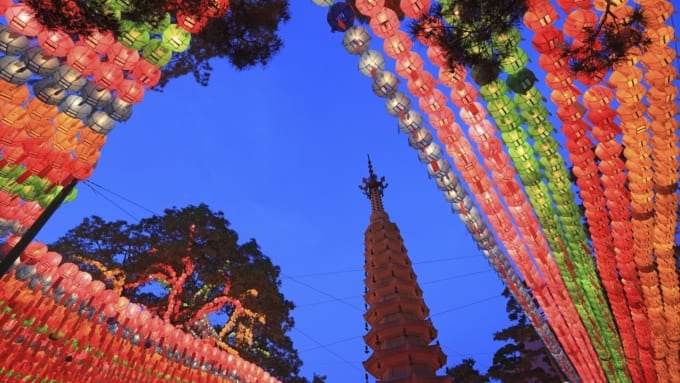
In Korea, more than half of the population identifies with a religion. The first religion to take root in Korea was Buddhism, and Jogyesa Temple is the main temple of the largest sect, the Jogye Order.
During the "Lotus Lantern Festival" (Yeondeunghoe) held on Buddha’s birthday (April 8th on the lunar calendar), the temple is adorned with countless colorful lanterns, creating a vibrant atmosphere. This limited-time scenery is a must-see! Since Jogyesa is just a short walk from the popular tourist area Insadong, why not visit both while you're there?
Name: Jogyesa Temple
Address: 55 Ujeongguk-ro, Gyeonji-dong, Jongno-gu, Seoul, South Korea
Access: Subway Line 3, Anguk Station, Exit 6 / 5-minute walk
Closed: Open all year
27. Bongeunsa Temple
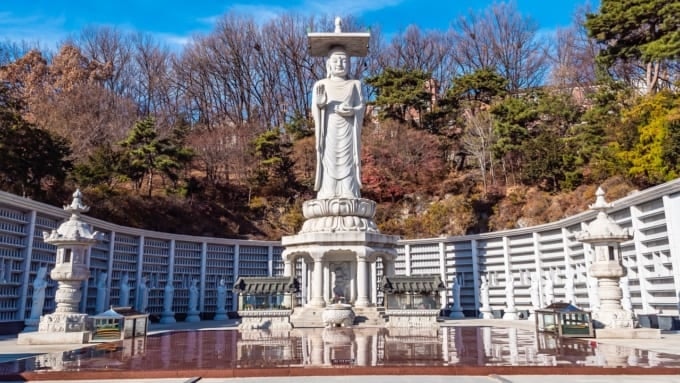
Located in the developed area of Gangnam, Seoul, Bongeunsa Temple is a traditional temple within walking distance of the popular COEX. Despite being surrounded by high-rise buildings, Bongeunsa offers a tranquil atmosphere, making it a favorite among tourists.
When it was founded in 794, it was originally called "Gyeonseongsa." It was later renamed "Bongeunsa" by Queen Jeonghyeon, the second wife of King Seongjong.
One of the temple's attractions is the Temple Stay program, which foreign visitors can also participate in. During a one-night, two-day stay, you can experience activities like tea ceremonies, meditation, and calligraphy. Advanced reservations are required, but group tours can be arranged with English language support (chanting is in Korean). It's a unique and unforgettable experience.
Name: Bongeunsa Temple
Address: 531 Bongeunsa-ro, Samseong-dong, Gangnam-gu, Seoul, South Korea
Access: Subway Line 9, Bongeunsa Station, Exit 1 / 2-minute walk
Hours: 4:00–22:00
28. Leeum Museum of Art
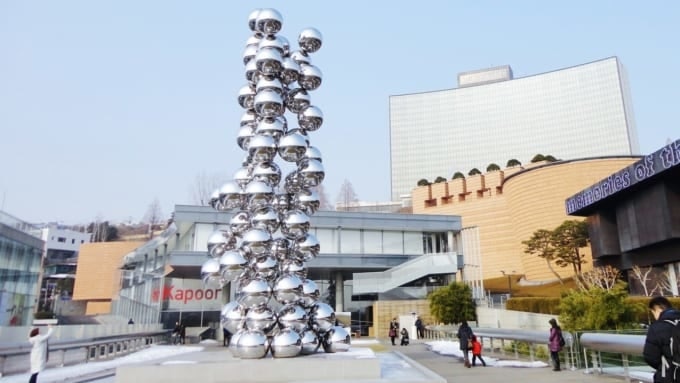
The Samsung Group, famous for its electronics, also runs the Leeum, Samsung Museum of Art, which has become a popular tourist spot in Seoul. Here, you can view a wide range of works, from ancient art to modern pieces.
World-renowned architects were involved in the design of the museum, which took eight years to build. The building itself is a work of art, so make sure to admire the architecture!
Another highlight is the digital guide available at the museum. It provides detailed information about the works, which you can enjoy through both audio and text. This cutting-edge device, developed by Samsung, is also available in English, making it a great companion for your art tour.
Name: Leeum Samsung Museum of Art
Address: 60-16 Itaewon-ro 55-gil, Hannam-dong, Yongsan-gu, Seoul, South Korea
Access: Subway Line 6, Hangangjin Station, Exit 1 / 5-minute walk
Hours: 10:30–18:00 (Last entry one hour before closing)
Closed: Mondays / Lunar New Year and Chuseok holidays
29. Changgyeonggung
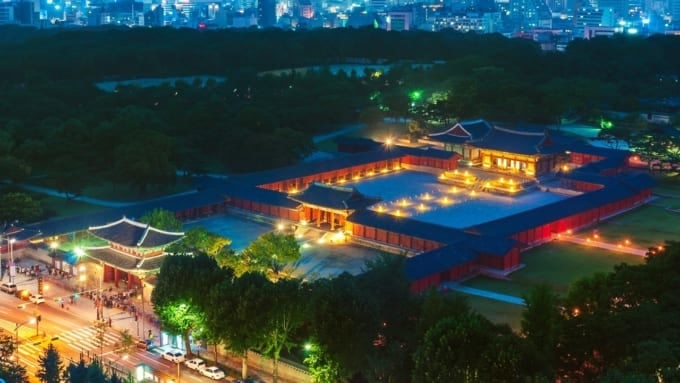
Changgyeonggung is another of Seoul’s five grand palaces. It was originally called "Suganggung" when it was built by King Sejong in 1418, but it was later renamed "Changgyeonggung" when it was rebuilt as a separate palace for queens.
This palace has a tragic history, having been destroyed by war and fire. During the Japanese occupation, it was repurposed and opened to the public as "Changgyeongwon," a botanical garden and zoo.
Restored in 1984 and its original name reinstated, Changgyeonggung is now designated as a historic site and is loved by tourists. Despite being surrounded by modern buildings, this serene and nature-filled space provides a peaceful retreat amid the bustle of Seoul.
Name: Changgyeonggung
Address: 185 Changgyeonggung-ro, Waryong-dong, Jongno-gu, Seoul, South Korea
Access: Subway Line 3, Anguk Station, Exit 3 / 20-minute walk
Hours: February–May, September–October: 9:00–18:00 / June–August: 9:00–18:30 / November–January: 9:00–17:30 (Last entry one hour before closing)
Closed: Mondays (Open on public holidays)
30. Heunginjimun (Dongdaemun)

Heunginjimun, commonly known as Dongdaemun, is located to the north of Dongdaemun Market. Did you know that its official name is actually "Heunginjimun"? This gate was built around 600 years ago to protect the eastern side of the city during the Joseon Dynasty.
In contrast to the bustling streets nearby, Heunginjimun is surrounded by a quiet atmosphere as if time has stopped. The combination of modern skyscrapers and the historic Heunginjimun is a must-see. Don’t forget to capture it in photos!
Name: Heunginjimun (Dongdaemun)
Address: 288 Jongno, Jongno 6-ga, Jongno-gu, Seoul, South Korea
Access: Subway Line 4, Dongdaemun Station, Exit 9
Official Website: https://japanese.visitkorea.or.kr/svc/whereToGo/locIntrdn/rgnContentsView.do?menuSn=&vcontsId=107144
31. Dongdaemun Market
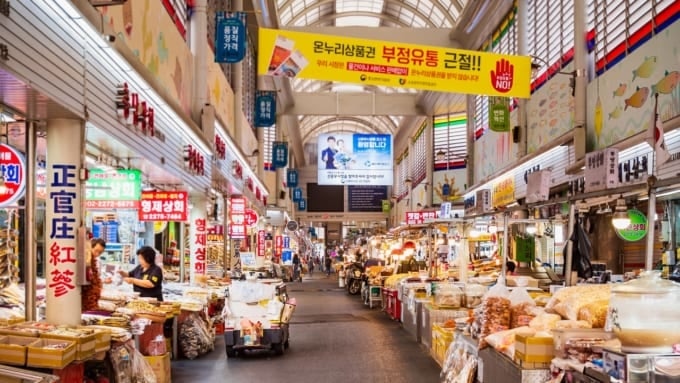
When it comes to sightseeing in Seoul, temples and food are great, but shopping is something you can’t miss! The ultimate shopping paradise in Seoul is Dongdaemun Market! Known as the "city that never sleeps," this market is loved by both Seoul locals and tourists alike.
Opened in 1970, it was once the largest single market in the East. Today, it consists of buildings A through D and five shopping towers. You can find everything here, mainly focusing on clothing such as women's wear, leather goods, children's wear, bags, shoes, accessories, and even traditional souvenirs. The variety is vast, the prices are reasonable, and it's a must-visit shopping spot for tourists. Surrounding the market are Seoul's famous street food stalls, making it a perfect spot for both shopping and food exploration.
Name: Dongdaemun Market
Address: Euljiro 6-ga, Jung-gu, Seoul, South Korea
Access: Subway Line 4, Dongdaemun Station, Exit 8 / 1-minute walk
Hours: Varies by store
Closed: Varies by store
Official Website: https://www.ddm-mall.com/
32. Lotte Mart Seoul Station Branch
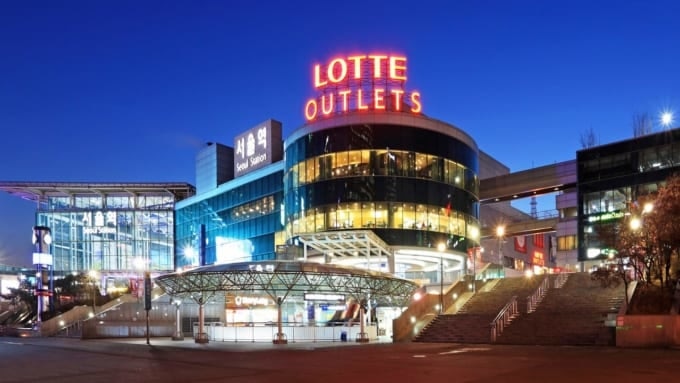
Just a short distance from Seoul’s top tourist destination, Myeongdong, is the Lotte Mart Seoul Station Branch. If you're unsure about what souvenirs to buy, this is the place to go. From food products to daily necessities and cosmetics, you’ll find everything you need, making it a very convenient spot for souvenir shopping.
If you want a quick snack or drink back at the hotel, it’s also a great place to grab some supplies. Due to the high number of tourists, many of the store signs are in English, and there are plenty of services such as delivery and tax refund assistance. The store is open until midnight, but don’t forget to bring your eco-bag, as shopping bags are not free.
Name: Lotte Mart Seoul Station Branch
Address: 426 Cheongpa-ro, Bongrae-dong, Jung-gu, Seoul, South Korea
Access: Subway Line 1 or 4, Gyeongui-Jungang Line, Airport Railroad, Seoul Station, Exit 1 / 2-minute walk from the old Seoul Station building
Hours: 10:00–24:00 (Food court until 22:00)
Closed: 2nd and 4th Sundays
33. Ssamziegil
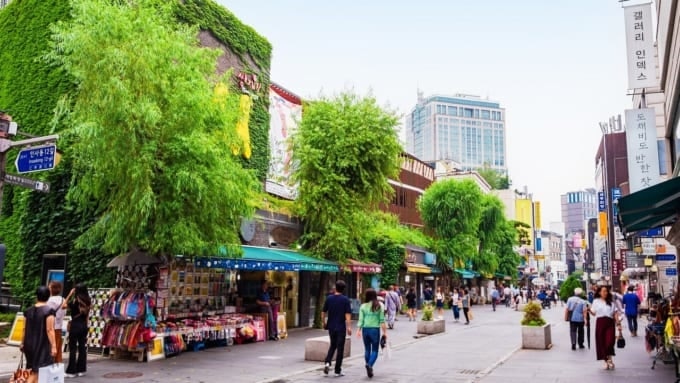
Ssamziegil is a unique shopping mall located in Insadong, a part of Seoul where the old streets remain intact. Since its opening in 2004, this four-story building with over 70 shops has become a popular spot for shopping, food, and art.
One characteristic of the shops in this area is that the signs are written in Hangul to preserve the traditional atmosphere. It’s a great photo spot for capturing the essence of Seoul.
A famous product from Ssamziegil is Makgeolli soap. Makgeolli is a traditional Korean fermented rice wine.. This soap, made from Makgeolli, is said to have beauty benefits. When visiting Seoul, consider bringing home this Makgeolli soap as a souvenir—it's sure to be a hit!
Name: Ssamziegil
Address: 44 Insadong-gil, Gwanhun-dong, Jongno-gu, Seoul, South Korea
Access: Subway Line 3, Anguk Station, Exit 6 / 5-minute walk
Hours: 10:30–20:30
Closed: Lunar New Year and Chuseok (1 day each)
Official Website: https://japanese.visitkorea.or.kr/svc/whereToGo/locIntrdn/rgnContentsView.do?vcontsId=104640
34. Samcheong-dong Street
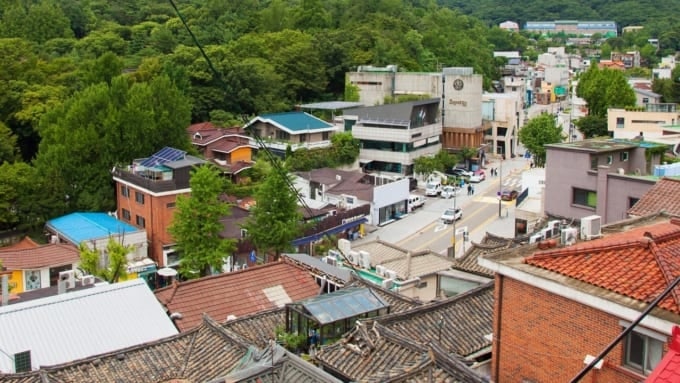
Samcheong-dong Street in Seoul is lined with beautiful ginkgo trees, and many traditional Korean houses (Hanok) have been converted into stylish cafes and shops. It's a popular area not only for foreign tourists but also among young people in Seoul.
This area has a charming, nostalgic vibe that sets it apart from the bustling areas like Namdaemun or Myeongdong, offering a more relaxed and mature atmosphere. It’s perfect for those who want to enjoy a leisurely sightseeing experience.
This street is also known for having the best ginkgo tree-lined path in Seoul. During the autumn season, many people visit Samcheong-dong to see the vibrant fall colors along the road that leads to Gyeongbokgung. Whether you’re taking a stroll or cafe-hopping, you’re sure to find your own unique way to enjoy this area.
Name: Samcheong-dong Street
Address: Samcheong-dong, Jongno-gu, Seoul / Seongbuk-dong, Seongbuk-gu, Seoul, South Korea
Access: Subway Line 3, Anguk Station, Exit 1 / Walk northwest toward Gyeongbokgung
35. Banpo Hangang Park
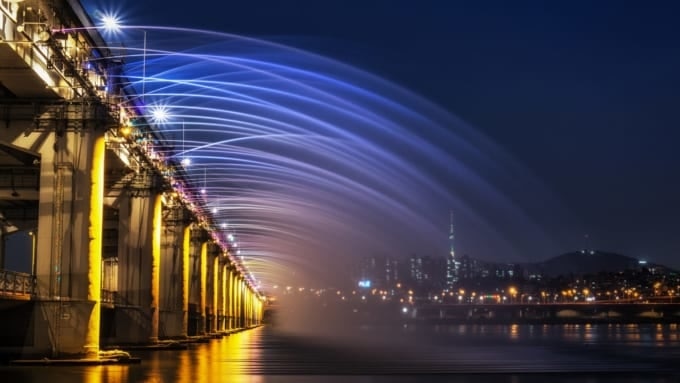
Banpo Hangang Park is located along the Han River. The Han River (Hangang) is crossed by 18 bridges and 3 rail bridges, making it a popular spot for sightseeing, both for its beautiful views and night scenes.
One of the most popular spots for couples is the Banpo Bridge, which lights up at night with around 200 lights and features a rainbow-like fountain. It’s also a famous filming location for Korean dramas, so K-drama fans might already be familiar with it.
The Han River is beloved by Seoul’s residents, and Banpo Hangang Park serves as a relaxation spot for locals. The park has plazas, sports facilities, and even a cruise boat terminal, making it a family-friendly destination. You can also enjoy a leisurely break at the park’s observatory, with a panoramic view of the Han River.
Name: Banpo Hangang Park
Address: 40 Sinbanpo-ro 11-gil, Banpo-dong, Seocho-gu, Seoul, South Korea
Access: Subway Line 3, 7, or 9, Express Bus Terminal Station, Exit 8-1 / 20-minute walk
Shuttle Bus: There’s a shuttle bus from the station to Sebitseom inside the park
36. Sinsa-dong Garosu-gil
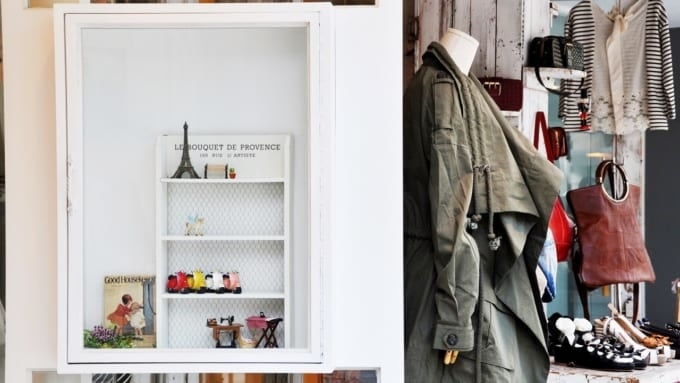
Sinsa-dong Garosu-gil, located in the Gangnam area of Seoul, is a trendy street known as a hub of fashion and style. "Garosu-gil" means "tree-lined street" in Korean, and as the name suggests, the street is lined with beautiful ginkgo trees along a 650-meter stretch, with stylish cafes and shops dotted along the way.
There are many new shops, ranging from high-end boutiques to more affordable ones, making it a popular destination not only for tourists but also for Seoul’s fashionable locals. Relax in one of the chic cafes while shopping for souvenirs.
Name: Sinsa-dong Garosu-gil
Address: Sinsa-dong, Gangnam-gu, Seoul, South Korea
Access: Subway Line 3, Sinsa Station, Exit 8 / Walk east and turn left at the third corner
37. Seoul Forest
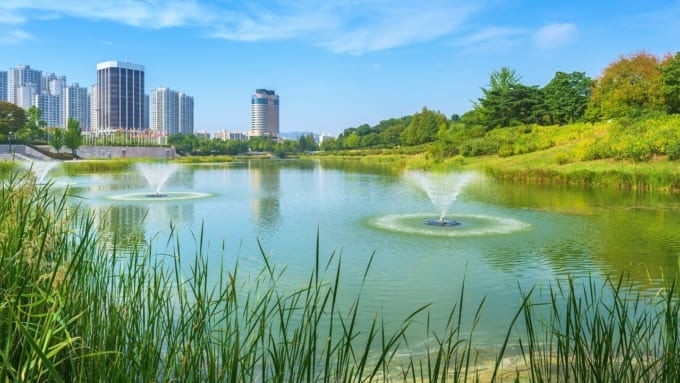
Seoul Forest is a vast urban park covering 350,000 pyeong (around 1,150,000 square meters) located along the Han River. The park is divided into five areas: Culture and Arts Park, Ecological Forest, Nature Experience Study Field, Wetlands Ecological Park, and Han River Waterside Park, making it a place where you can enjoy nature in the heart of the city.
A highly recommended activity is renting a bike and enjoying the scenery as you ride. It’s a popular course not only for locals but also for foreign tourists. There is also a lawn area perfect for picnics.
Surprisingly, this park is home to deer! It’s fascinating to see deer in the middle of Seoul. You can also spot squirrels and ducks roaming freely, and you can even feed them. It’s the perfect spot for a refreshing escape into nature within the city.
Name: Seoul Forest (Seoul Forest Management Office)
Address: 273 Ttukseom-ro, Seongsu-dong, Seongdong-gu, Seoul, South Korea
Access: Bundang Line, Seoul Forest Station, Exit 3 / Walk through UNDER STAND AVENUE / 5-minute walk
Hours: Varies by facility
Closed: Open year-round (Exhibition halls are closed on Mondays)
Official Website: https://japanese.visitseoul.net/nature/seoul-forest-jp_/1841
38. Museum Kimchikan
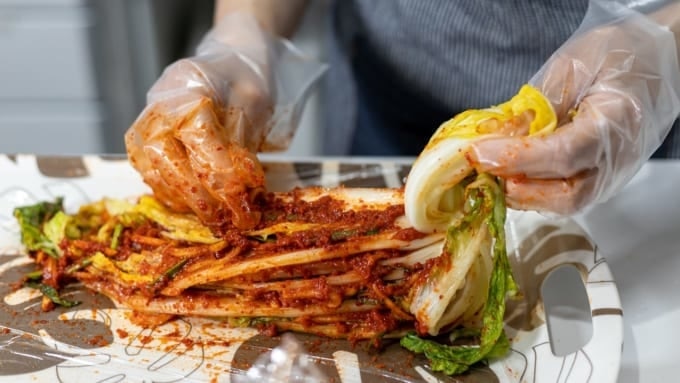
When you think of Korean food, what comes to mind? While there are many delicious options like Makgeolli and Samgyeopsal, kimchi is a staple. The Museum Kimchikan is a museum dedicated to kimchi, Korea’s representative dish.
Opened in 2015, this museum is conveniently located near the popular tourist area of Insadong. Inside, you can learn about the history of kimchi, explore the kimchi scientist’s room, and more.
One of the highlights is the kimchi-making experience. You can even try making “Kkakdugi,” a fresh salad kimchi that you might not have heard of.. If you want to experience something unique to Seoul, this is the place to go. Why not make your own custom kimchi and taste a one-of-a-kind creation?
Name: Museum Kimchikan
Address: 35-4 Insadong-gil, Gwanhun-dong, Jongno-gu, Seoul, South Korea (4th–6th floors, Insadong Maru)
Access: Subway Line 3, Anguk Station, Exit 6 / 6-minute walk
Hours: 10:00–18:00 (Last entry at 17:30)
Closed: Mondays / New Year’s Day / December 25th / Lunar New Year and Chuseok holidays
Official Website: https://www.kimchikan.com/
39. Myeongdong Nanta Theater
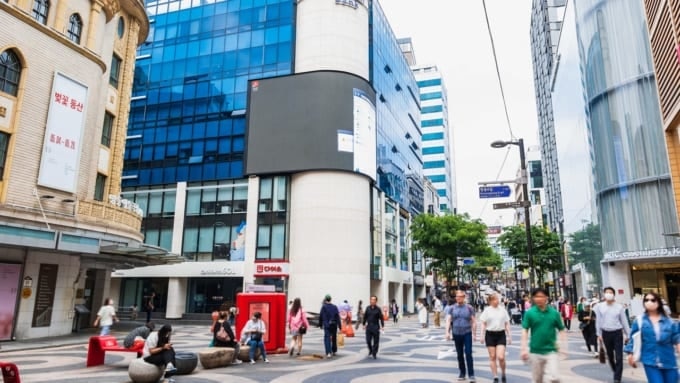
Located in the heart of Myeongdong, the Nanta Theater is a venue where you can enjoy Korea’s first non-verbal performance, a show without dialogue. Nanta is a globally recognized performance that has been popular since 1997.
The show is a comic story about four chefs trying to prepare a wedding banquet in time, combined with percussion performances based on the rhythm of Korean folk music "Samulnori."
Since there are no spoken lines, language is not a barrier, making it enjoyable for both adults and children. Tickets can be reserved through tourist websites, so if you plan to watch the show, it’s recommended to book in advance before your trip to Seoul.
Name: Myeongdong Nanta Theater
Address: 26 Myeongdong-gil, Myeongdong 2-ga, Jung-gu, Seoul, South Korea (3rd floor, UNESCO Hall)
Access: Subway Line 2, Euljiro 1-ga Station, Exit 6 / 5-minute walk / Subway Line 4, Myeongdong Station, Exit 6 / 5-minute walk
Hours: Varies by performance
Closed: Varies by performance
Official Website: https://www.nanta.co.kr:452/jp/show/detail.php?id=1
◎ Enjoy sightseeing, food, entertainment, and shopping in Seoul!
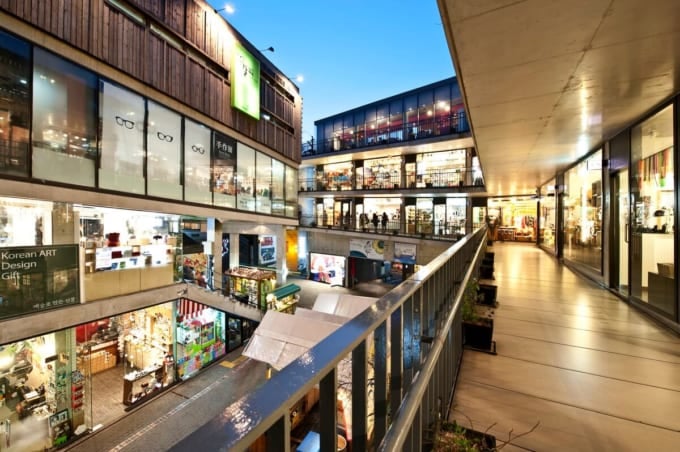
Seoul is home to many popular tourist attractions, including temples, World Heritage Sites, and museums. Whether it’s your first time visiting or you’ve been to Korea several times, Seoul is a city that never disappoints. It’s easy to access, and flight tickets are affordable! Don’t just visit tourist spots—enjoy the food, entertainment, and shopping as well.
RELATED ARTICLES
REGIONS
CATEGORIES
FEATURED ON Seoul
-
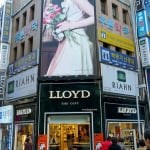
Shopping in Myeongdong! Must-Check Korean Brands Introduced!
-
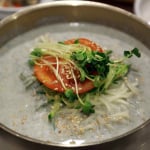
If You’re Having Lunch in Seoul’s Gourmet Battleground, Myeong-dong, This is the Place! 3 Recommended Spots
-

2 Recommended Spots in Dongdaemun for Nail Salons and Affordable Nail Supplies
-
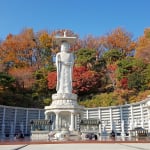
Bongeunsa Temple, an Unmissable Historic Temple in Seoul’s Gangnam
-
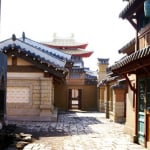
Gourmet Food and Filming Location Tours that Stir the Travel Spirit in Seoul / How to Explore Bukchon Hanok Village
MOST POPULAR ON Seoul
-
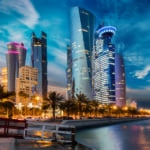 1
1Doha: Must-see Attractions in the Capital of Qatar
-
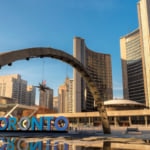 2
2Toronto: 10 Things to do in this Picturesque Canadian City
-
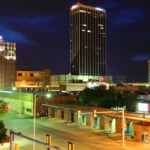 3
3Amarillo: A City Famous for It’s Amazing Canyons, Great History and Music
-
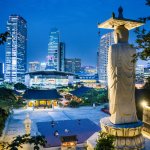 4
4South Korea: Dazzling Scenery, Rich Culture and Fascinating History
-
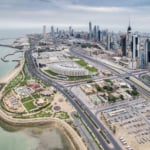 5
5Kuwait: A Country in Middle East Asia Famous for Hot Sand Dunes and Stunning Cityscape

